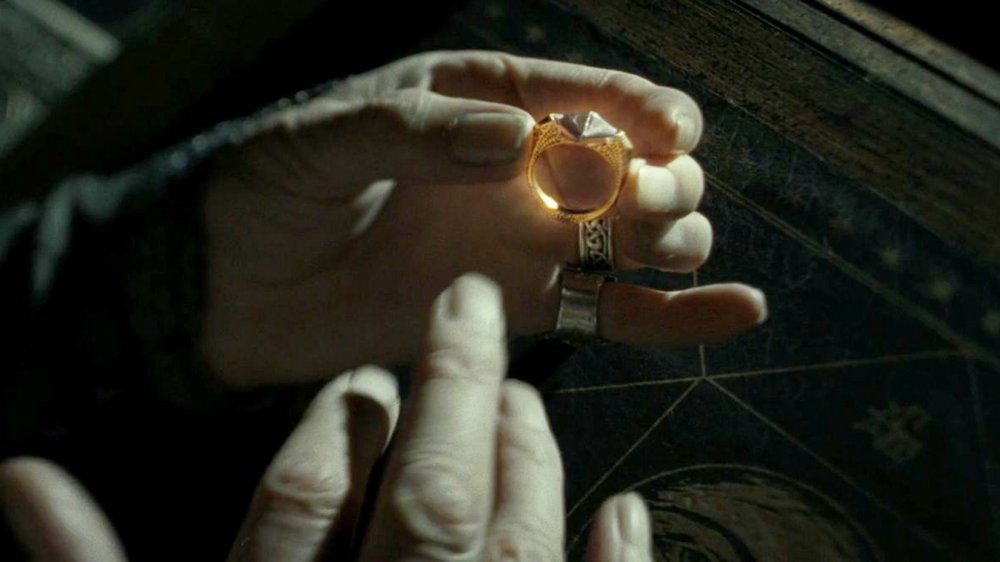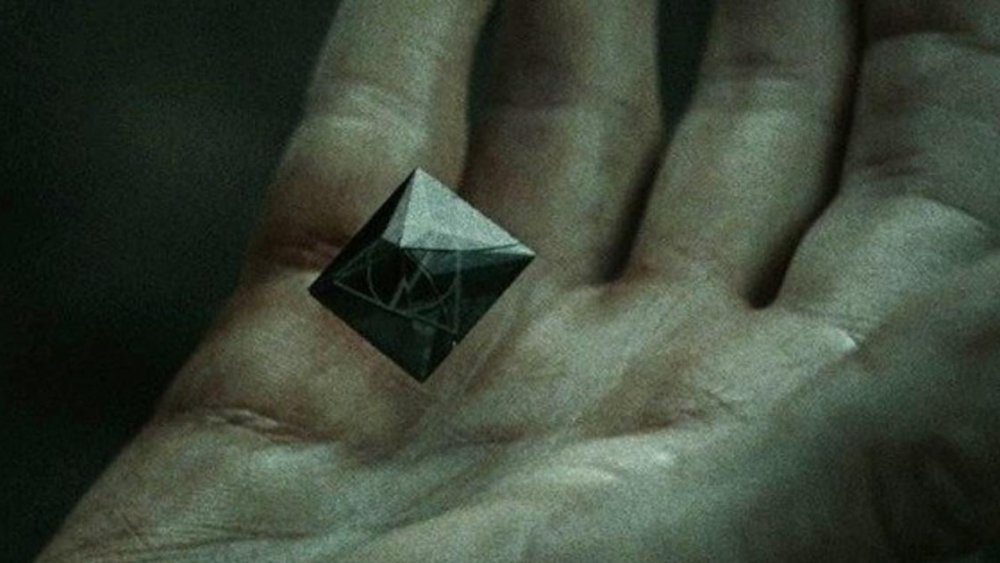The Problem With The Resurrection Stone In Harry Potter
Harry Potter is full of mystical, magical items, but one of its most important artifacts isn't as amazing as it seems.
In the final book and film of the epic fantasy series, Harry Potter (Daniel Radcliffe) and his best friends Ron Weasley (Rupert Grint) and Hermione Granger (Emma Watson) set out to find and destroy all of the Horcruxes — items containing the shard of a person's soul — that belong to the Dark Lord Voldemort (Ralph Fiennes). The only way that Harry can kill Voldemort by eradicating all of the Horcruxes, so it makes sense that the trio is quite driven about their quest, but before long, another set of incredibly invaluable items temporarily tempts them away from the Horcruxes.
When Harry, Ron, and Hermione discover the mystery of the Deathly Hallows, they're distracted by the magical triad, which is made up of the super-powerful Elder Wand, the Cloak of Invisibility, and the Resurrection Stone. Considering that Harry already has what he and his friends believe is the real Invisibility Cloak, they decide to hunt down the Wand — though the Stone, which can bring people back from the dead, remains a tantalizing mystery.
However, the Resurrection Stone is actually pretty problematic. Here's why you wouldn't want to wield this particular Deathly Hallow from Harry Potter.
The big issue with the Resurrection Stone
The idea of the Deathly Hallows is introduced in author J.K. Rowling's book of children's stories The Tales of Beedle the Bard, in a story called "The Tale of the Three Brothers." In the tale, the Hallows are items crafted by Death himself to three brothers who evade his clutches; the eldest asks for an all-powerful wand, the middle brother asks for a stone that can bring the dead back to life, and the youngest asks for a cloak to make himself invisible.
Unfortunately, though the middle brother's lost love does return when he uses the Stone, it's as nothing more than a shadow and causes her spirit pain and suffering, and the brother is still left bereft. Eventually, he takes his own life to truly be with her — and, as the Tale tells us, "Death took the second brother for his own."
Harry eventually finds the Stone in an old Snitch that Dumbledore left behind, and as he prepares to sacrifice his life to defeat Voldemort, he turns the Stone over three times, producing pale images of his late parents, his godfather Sirius Black (Gary Oldman), and other loved ones. Though the group supports Harry as he journeys through the Forbidden Forest to his death, the constant reminder that they're not real is haunting — proving that this Stone isn't all it's cracked up to be.
After sacrificing himself, returning from near-death, and defeating Voldemort once and for all, Harry realizes he dropped the Resurrection Stone in the Forest and decides he won't go and look for it again, which is a wise choice. Though the Resurrection Stone sounds amazing to anyone who has ever grieved a loved one, nothing can truly bring back the dead, and the Stone will just emotionally torment whoever uses it.

